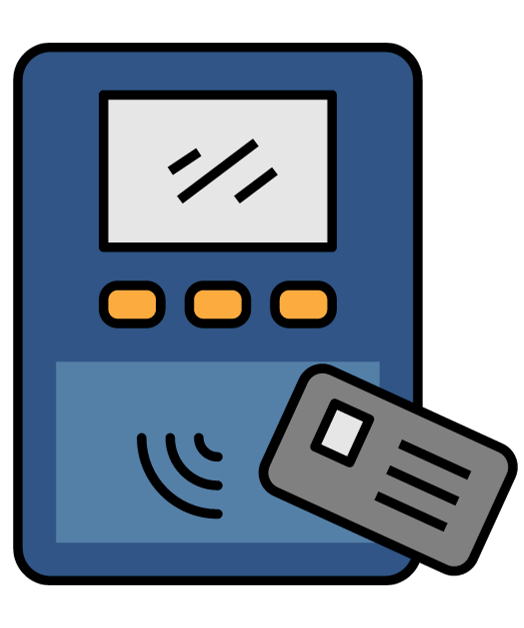As offices bustle with increasing activity, a new sound emerges: the click of attendance monitoring systems.
According to CBRE, nearly 60% of employers are jumping on the attendance tracking bandwagon, leading to a heated debate. While companies believe it’s all about optimizing teamwork, employees are sounding the alarm on privacy and trust.
This article unpacks the intricacies of attendance tracking, its workplace implications, and the pursuit of common ground.
Pressed for time? Here’s a quick summary…
- Office attendance evolution: As many as 57% of employers are now using attendance monitoring systems, leading to a heated debate about their implications. Tech titans are leading the charge, with companies like Meta Platforms, Google, and TikTok leveraging badge data to ensure compliance with return-to-office policies.
- Employee backlash: The increased scrutiny, likened to Big Brother overreach, has led to concerns about privacy, trust, and morale. The emergence of ‘Badge Pirates’ highlights the potential pitfalls of these monitoring systems.
- Presence vs. Performance: Is physical presence in the office a true indicator of productivity? Experts caution against overreliance on badge data as a metric for actual work output.
- Strategic use of attendance data: Beyond tracking, companies are using this data to optimize office layouts, ensure resource distribution matches demand, and tailor work policies to align with employees’ preferences for in-office and remote work.
- Beyond monitoring: Innovative solutions are shifting the focus from mere attendance to actual performance, including feedback-based evaluations, task and project management tools, and empowering employees to self-report office visits.
Big Brother In The Office?

The humble work badge, once just a key to the office door, has evolved into a tool for tracking employee presence and time spent at the office. As usual, big tech is leading the charge:
- Meta Platforms informed its employees that their badge data would be reviewed monthly to assess compliance with their RTO policy and that repeated violations could result in disciplinary actions.
- Google notified its workforce about the potential use of badge-swipe data to enforce its in-office policies.
- TikTok uses an internal tool, MyRTO, to track badge swipes and requires employees to provide reasons for absences if they don’t meet the return-to-office target.
These tech giants are not alone in their quest for more clarity on how to entice (and mandate) employees to show up. However, while many organizations view this as a strategy for effective management, employees often perceive it as an unwelcome intervention on their daily routine.
When Google emailed employees in June about increased monitoring and reminders for absent workers, it stirred “a lot of agitation,” according to one Google engineer:
The messaging felt incredibly paternalistic. It’s not an appropriate treatment of people whose jobs can be done remotely.
Anonymous, engineer at Google
The increased scrutiny of in-office attendance brings the potential for invasive surveillance, blurring the line between monitoring and “Big Brother” overreach.
Employee Pushback: When Monitoring Meets Morale

This kind of surveillance not only raises ethical concerns but also profoundly impacts employee well-being. The constant feeling of being watched can heighten anxiety and stress, making employees feel both undervalued and distrusted. This can erode morale, job satisfaction, and can lead to increased turnover rates.
These concerns led to a significant response from labor unions and employee representatives in late August. Unions representing New York Times employees issued cease-and-desist letters to management, prompted by the company’s announcement that it could potentially monitor badge data as part of its RTO efforts.
People don’t want to be required to come in, and they also don’t want to be surveilled. It’s a little bit infantilizing, in my opinion, to have to take attendance, essentially whether you’re coming in or not, rather than relying on: Are you getting your work done?
Goran Svorcan-Merola, iOS Developer for the New York Times’ Games department & Vice Chair of the New York Times Tech Guild
As resistance to these policies grows, a new moniker has emerged: ‘Badge Pirates.’ These employees clock in at the office with a badge swipe but make a hasty exit soon after. Their actions shine a light on a critical dilemma: Does attendance monitoring genuinely promote compliance, or does it unintentionally encourage defiance and clever circumvention? And at what cost? Is it prudent to compromise employee trust, satisfaction, and morale for mere incremental boosts in office attendance?
Is Attendance Monitoring The Right Measure?
Organizations once wooed employees into the office with perks, from free lunches to team events. Now, as the stick replaces the carrot, there are growing concerns. Does tracking attendance truly equate to productivity? Or are we just counting heads while missing the bigger picture?
Where employers go wrong is by putting too much stock in badge data or relying on it to judge an employee’s time at work or productivity. Badge swipe data, even if it’s good data, is not indicative of people working. It just means they’re present.
Kathleen McLeod Caminiti, Co-Chair of the Wage & Hour Practice Group at law firm Fisher Phillips
Other Strategic Uses Of Attendance Data
Forward-thinking employers are leveraging attendance data in diverse, strategic ways, going beyond merely tracking hours spent in the office, to make informed decisions.

- Optimizing Workspace: Insurer Allstate leverages badge-swipe data to understand which spaces are most frequently used by employees, helping the company optimize office layouts, reduce unnecessary space, and tailor the environment to employee preferences.
You know what I do with that report? I read it. I don’t then take the report and start calling people. The only reason we do that is to understand: What’s the utilization of an office? Do we need more space or less space? It’s not to check on employees.
Bob Toohey, Chief Human Resources Officer at Allstate
- Efficient Resource Allocation: By having data about when and where employees are present, employers can ensure that facilities and amenities are appropriately distributed to meet demand. This not only maximizes resource use but also augments the overall employee experience.
- Harmonizing Remote And On-Site Work: With hybrid work models becoming the norm, understanding attendance patterns provides a clearer picture of how employees balance in-office and remote work. This crucial data aids organizations in discerning if mandatory in-office time truly boosts productivity or inadvertently hampers it.
Looking Beyond The Badge
Several alternative solutions acknowledge the limitations of attendance monitoring and offer an outcome-based, employee-centric approach to managing hybrid workforces.

Feedback-Based Performance Evaluations
Instead of solely relying on attendance data, implement regular feedback mechanisms to assess performance. Managers can facilitate ongoing conversations with their teams, offering constructive guidance that helps employees align their efforts with organizational goals. This promotes a culture of growth, accountability, and continuous improvement, where team members are encouraged to excel based on their contributions rather than their physical presence.
Task & Project Management Tools
In a hybrid work environment, the integration of task and project management tools has become essential for productivity. These digital platforms enable teams to collaborate seamlessly regardless of their physical location. Organizations can evaluate performance based on tangible outcomes, rather than attendance metrics, by tracking progress on tasks and projects.
Employee Self-Reporting & Decentralized Monitoring Methods
Instead of employing top-down surveillance, empower employees with the responsibility of reporting their own progress and work status. This shift toward greater autonomy and self-assessment allows employees to take ownership of their work, establishing a sense of trust, and leading to more meaningful and accountable outcomes.












